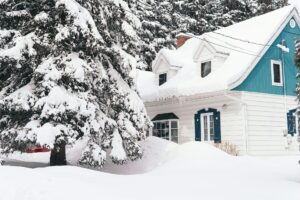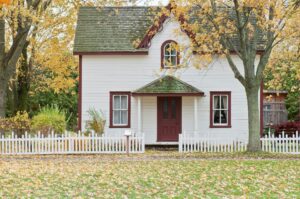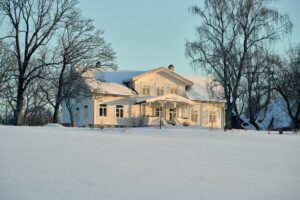A roof is more than just a protective cover over your head; it’s a powerful investment in your property’s future. A well-chosen upgrade can dramatically cut utility bills, lower maintenance needs, and even reshape how you experience home ownership. This guide shows why a new roof can be one of the most cost-effective home improvements, reinforcing your sense of security while setting you up for sustained long-term savings.
High-Impact Benefits
Upgrading a roof can initially feel like a large expense, but its rewards often far outweigh the initial outlay. The main reasons for taking this step include:
- Enhanced property value that can lead to a better resale price.
- Lower energy bills resulting from improved insulation and ventilation.
- Fewer major repairs and maintenance tasks over time.
- Increased comfort, with more stable interior temperatures and reduced risk of leaks.
These four areas unite to create a powerful rationale for updating your roof sooner rather than later. Each benefit builds upon the other to create an overall effect that extends well beyond a simple “surface fix.”
Boosting Home Value
A roof plays a key role in shaping a home’s appearance and structural integrity. When appraisers, prospective buyers, or real estate agents evaluate a home, a dated or damaged roof often raises concerns about hidden problems. On the other hand, a newly installed roof inspires confidence and enhances perceived value.
In many cases, homeowners recoup a significant percentage of the roof upgrade’s cost when they sell. That return can be surprisingly high, especially if the roof’s design and materials align with local market preferences. A strong ROI not only validates the investment but can also accelerate a property’s sale, making the upgrade an appealing choice for forward-thinking homeowners.
Curb Appeal and Pride of Ownership
When you see a home with a fresh roof, it immediately stands out—like a newly painted masterpiece compared to a faded canvas. From bright asphalt shingles to sophisticated slate tiles, fresh roofing complements siding, landscaping, and architectural style in a way that transforms the entire look of a home.
This revamped appearance doesn’t just please potential buyers. It also reshapes the homeowner’s everyday experience. Stepping onto your driveway and seeing a clean, modern roof brings a sense of pride and psychological comfort, reinforcing the feeling that your investment is secure and thriving.
Reducing Energy Costs
A solid roof upgrade typically has a direct impact on your utility bills. Modern roofing materials and advanced insulation work together to regulate temperature throughout the seasons. Look for certifications—like those found on Energy Star–rated shingles—to verify a product’s efficiency.
Here’s how it breaks down:
- Reflective Shingles: Roofs engineered to absorb less heat reduce strain on air conditioning in hot climates.
- Improved Insulation: Properly installed underlayment and other insulating layers help maintain coolness during summers and warmth in winter.
- Ventilation Systems: Venting prevents buildup of hot air, keeping attic spaces comfortable and further lowering energy demands.
With these design features, a new roof can help you better harness natural climate control, saving you money year-round. Installing a roof with high solar reflectance or specialized insulation is one of the simplest ways to make your home greener. You can reference the official Energy Star guidance (https://www.energystar.gov/products/roof_products) for more insights on roofing products that meet strict efficiency standards.
Long-Lasting Protection
When storms arrive, every homeowner is reminded of the importance of a dependable roof. Strong, moisture-resistant materials defend against damage from rain, wind, ice, and even hail. Upgraded roofs often incorporate features such as:
- Water Shields: Self-adhering membranes that seal vulnerable areas, like valleys and eaves, preventing leaks.
- Wind-Resistant Shingles: Newly developed shingles tested to withstand stronger gusts.
- Impact-Resistant Materials: Specially rated products offering better durability against hail and falling debris.
By opting for these enhancements, you reduce the chance of costly weather-related fixes. Over time, substituting short-lived materials with sturdier choices can save you both money and peace of mind.
Healthier Interior Environment
A roof does more than keep out the elements. It also prevents moisture intrusion, which can quickly create conditions for mold, mildew, and other hazards. A compromised roof might show no visible inside leaks yet still allow water infiltration in ceiling cavities, walls, or insulation. Over months or years, this hidden dampness can spur a range of issues, from structural rot to compromised indoor air quality.
A proactive roofing upgrade uses modern barriers and sealing techniques to deter moisture from creeping through the smallest cracks. This not only protects the physical structure but helps keep indoor environments free from mold spores and allergens. Homeowners can enjoy fresher air and fewer health hazards—a long-term value that extends far beyond simple repair costs.
Material Choices for Optimal Results
Selecting roofing materials today isn’t as simple as “asphalt or nothing.” Developments in roofing technology have opened up a variety of choices, each with its own set of advantages:
- Asphalt Shingles
Widely used for their affordability and ease of installation, asphalt shingles remain popular. Advanced options feature improved durability, unique colors, and better energy efficiency. - Metal Roofing
Metal roofs are highly durable, lasting 40–70 years with minimal upkeep. They reflect solar energy, keeping homes cooler, and with proper installation, they can endure various types of extreme weather. - Slate and Tile
Though more expensive upfront, slate and tile roofs are prized for their longevity and timeless appearance. They stand up to temperature swings and offer robust defense against fire. - Synthetic Composites
Lightweight and cost-effective, certain synthetic materials replicate the look of wood or slate with enhanced durability. They often require less preventive maintenance while still providing a designer aesthetic.
Each option lets you balance budget, aesthetic preference, and maintenance goals. As you explore possibilities, aligning roof material choice with your home’s structure and regional climate ensures you’ll maximize your investment. This comparative resource from This Old House (https://www.thisoldhouse.com/roofs/21018533/roofing-materials) outlines how different materials stack up on cost, longevity, and design, offering deeper guidance.
Real-World Example
Consider homeowners in a hot coastal region. Their home’s existing roof had dark shingles with severe granule loss. After thorough research, they installed reflective, wind-resistant asphalt shingles designed to lessen heat penetration. They paired the upgrade with ridge vents and rooftop turbines to improve airflow. Within a year, they noticed their air conditioning usage decline while feeling a more consistent, pleasant indoor temperature. Not only did they save on daily utilities, but they also felt better protected from hurricane-season winds. This upgrade shows how targeted enhancements deliver immediate returns while reinforcing long-term resilience.
Simplifying Maintenance
Older roofs often need frequent upkeep—like replacing missing shingles or repairing leaks—especially if they have worn or out-of-date materials. While these modest fixes might delay a major expense, they don’t address the fundamental deterioration. Eventually, you find yourself caught in a cycle of repeated technical patches.
Investing in a roof rebuild with modern materials breaks this cycle. New roofs typically require only periodic inspections and basic clearing of gutters and debris. That streamlined maintenance schedule leaves more time for what truly matters in life, instead of tackling roofing surprises.
Cost-Saving Insights
While surface aesthetics ignite interest, the real economics revolve around cost containment. A wise roof installation can significantly curtail:
- Repair Bills: Using higher-quality materials reduces the chance of leaks and water damage that lead to pricey contractor calls.
- Energy Spending: Efficient design and insulation techniques slash heating and cooling costs year-round.
- Insurance Premiums: An up-to-date roof often meets stricter building codes and safety standards, potentially qualifying homeowners for better coverage rates.
When you combine these factors over a 20–30 year period, the initial investment aligns with an extended horizon of lowered expenses. The ripple effect can brighten the financial outlook for decades, freeing budget space for other priority projects and home improvements.
Planning for Solar or Green Solutions
Today’s roofing upgrades can be designed to accommodate tomorrow’s technologies. If you’re considering solar panels or a vegetative “green” roof, an early discussion with roofing professionals ensures structural readiness. Whether you add solar arrays now or in a few years, preparing for them in advance can spare you the hassle of another large-scale adjustment later.
Similarly, if you’ve dreamed of a backyard greenhouse or a green roof for water conservation, keep your materials and slope design flexible. By incorporating elements that open possibilities for future additions, you enhance your home’s adaptability over time.
Financial Support and Incentives
Many states and local governments recognize the community benefits of high-efficiency, durable roofs, making special loans and incentive programs available. Examples include:
- Energy-Efficient Rebates: Some utilities or state programs offer refunds or rebates for homeowners who upgrade to approved roofing materials.
- Property-Assessed Clean Energy (PACE) Financing: Certain regions allow the cost of green or efficient upgrades to be repaid through a property tax assessment.
- Insurance Discounts: Insurers sometimes reduce premiums for hurricane-resistant shingles or similar improvements.
An hour spent researching local and federal options can reveal cost offsets you didn’t realize were accessible. A quick visit to your state’s energy department website or DSIRE (Database of State Incentives for Renewables & Efficiency) can point you toward available incentives: https://www.dsireusa.org/
A Lasting Source of Savings
Roofing is one of the few home investments that tangibly combines comfort, safety, and curb appeal. While undeniably a major decision, it’s also an investment uniquely capable of paying for itself many times over. With modern materials, you curb energy use, battle weather extremes, and create a healthier indoor environment, all while elevating your property’s value.
Exploring diverse roof types, clarifying financial incentives, and engaging professionals who understand local climate conditions ensures a tailored approach. Each stage, from material selection to final roof installation, becomes a stepping stone toward both immediate perks and long-term successes. Whether you prioritize a lower monthly energy bill, a boost in home value, or an eco-friendly transition, upgrading your roof offers a powerful edge.
The best part? Each time you walk up to your home, you’ll be greeted by the tangible impact of your decision—comfort, beauty, and a more stable financial outlook under one sleek, dependable cover.




